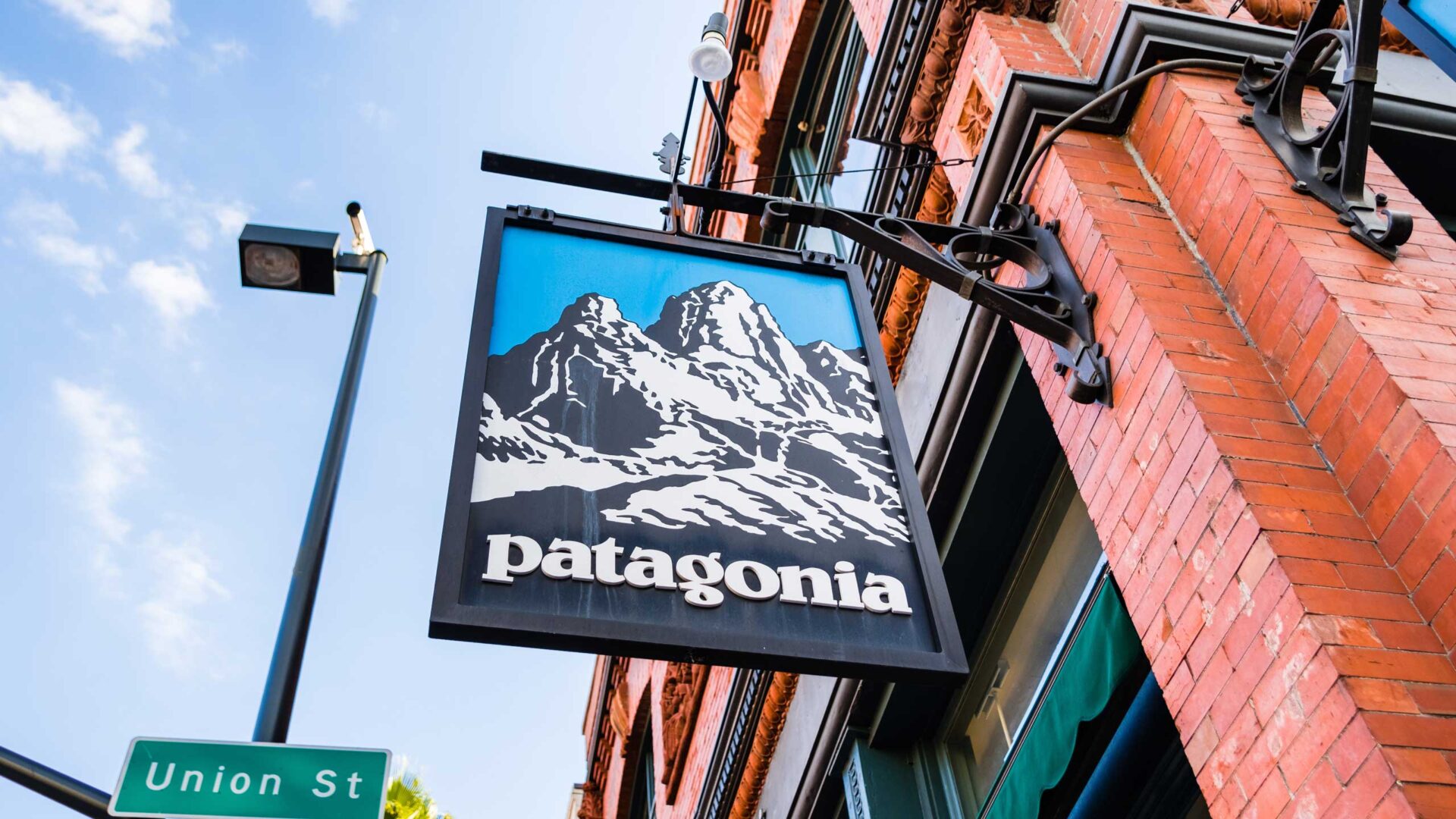Patagonia is an American outdoor clothing and equipment company that was founded in 1973 by Yvon Chouinard. The company is headquartered in Ventura, California, and has over 35 retail stores in the United States, Canada, Europe, and Japan. Patagonia is known for its high-quality, durable outdoor gear, as well as its commitment to environmental responsibility. This article delves into the marketing strategies employed by Patagonia, and the brand campaigns focusing on sustainability and authenticity as the driving forces behind their success.
History of Patagonia
Patagonia was originally founded as a climbing gear company by Yvon Chouinard, a world-renowned rock climber. Chouinard was frustrated with the poor quality of climbing gear that was available at the time, so he decided to start his own company to make better products. The company’s first product was a piton, a tool used for climbing. Patagonia quickly became a leading manufacturer of climbing gear, and its products were used by some of the most famous climbers in the world.
In the early 1980s, Patagonia began to expand its product line to include outdoor clothing. The company’s clothing was designed to be both functional and stylish, and it quickly became popular with outdoor enthusiasts. Patagonia also began to focus on environmental responsibility, and it was one of the first companies to use recycled materials in its products.
Patagonia is now one of the leading outdoor clothing and equipment companies in the world. The company’s products are sold in over 60 countries, and it employs over 2,000 people. Patagonia is still committed to environmental responsibility, and it donates a portion of its profits to environmental organizations. The company also encourages its customers to “buy less, buy better,” and to repair their Patagonia products instead of replacing them.
Patagonia’s Commitment to Environmental Responsibility
Patagonia is a certified B Corporation, which means that it meets rigorous standards of social and environmental performance, accountability, and transparency. The company has a number of initiatives in place to reduce its environmental impact, including:
- Using recycled materials in its products
- Manufacturing its products in factories that meet high environmental standards
- Reducing its carbon emissions
- Supporting environmental organizations
Patagonia is also committed to educating its customers about the importance of environmental responsibility. The company’s website includes a number of resources on topics such as sustainable clothing and environmental activism.
Marketing Strategies of Patagonia
In today’s competitive business landscape, successful companies need more than just quality products or services to stand out. Patagonia has captured the hearts and minds of consumers worldwide with its unique marketing strategies. This part delves into the marketing strategies employed by Patagonia, focusing on sustainability and authenticity as the driving forces behind their success.
Embracing Environmental Activism: Patagonia’s marketing strategies revolve around its deep commitment to environmental activism. The company goes beyond just selling outdoor clothing and gear; it actively advocates for environmental causes. Patagonia uses its brand platform to raise awareness about pressing environmental issues such as climate change, deforestation, and pollution. Through their marketing campaigns, Patagonia encourages consumers to take action, participate in environmental initiatives, and support organizations working towards sustainability.
Transparent and Ethical Supply Chain: Patagonia places a strong emphasis on transparency and ethical sourcing throughout its supply chain. The company takes proactive steps to ensure that its products are made with minimal environmental impact and uphold fair labor practices. They share detailed information about their manufacturing processes, material sourcing, and production methods with consumers. Patagonia’s commitment to transparency helps build trust and credibility with customers who value ethical and sustainable business practices.
Compelling Storytelling: Storytelling is a powerful tool in Patagonia’s marketing arsenal. The company leverages storytelling to connect with consumers on a deeper, emotional level. They use narratives that highlight their brand values, mission, and the impact they are making in the world. Patagonia often features real-life stories of individuals and communities positively affected by their initiatives, such as environmental activists, conservationists, or outdoor enthusiasts. By sharing these stories, Patagonia creates an emotional connection with customers, inspiring them to support the brand and its environmental causes.
Product Durability and Repair Program: Patagonia differentiates itself by prioritizing product durability over fast fashion trends. The company designs its products to be long-lasting and of high quality, encouraging customers to make sustainable purchasing decisions. Patagonia offers a repair program where customers can send in their worn-out or damaged products for repair instead of throwing them away. This initiative aligns with the company’s commitment to sustainability and reduces waste. The repair program also fosters customer loyalty and satisfaction, as it allows customers to extend the lifespan of their products and reduces the need for frequent replacements.
Engaging Community and User-Generated Content: Patagonia actively engages with its community through various marketing initiatives. The company encourages customers to share their outdoor adventures, environmental activism, and experiences using the hashtag #MyPatagonia on social media. By showcasing user-generated content, Patagonia creates a sense of community and authenticity around its brand. It also serves as social proof, demonstrating the positive impact of the brand and inspiring others to participate in outdoor activities and environmental initiatives. Patagonia regularly features customer stories and content on their website and social media channels, further strengthening the bond between the brand and its community.
Retail Store Experience: Patagonia’s retail stores play a crucial role in its marketing strategy. The stores are designed to reflect the company’s commitment to sustainability and environmental consciousness. Patagonia uses eco-friendly materials, energy-efficient fixtures, and incorporates sustainable design elements. The stores provide a unique shopping experience where customers can explore and connect with the brand’s values. Patagonia stores often host environmental events, workshops, film screenings, and community engagement activities to foster a sense of community and inspire customers to live an outdoor and environmentally conscious lifestyle.
Patagonia’s marketing strategies are deeply rooted in sustainability, transparency, and authenticity. By actively engaging in environmental activism, promoting product durability and repair, sharing compelling stories, fostering a community, and creating immersive retail experiences, Patagonia has successfully positioned itself as a leader in sustainable outdoor apparel and gear. The company’s commitment to its core values resonates with consumers who prioritize environmental responsibility, leading to a loyal customer base and a positive impact on the planet.
Brand Campaigns of Patagonia
Patagonia is known for its innovative and thought-provoking brand campaigns. The company’s campaigns often challenge traditional notions of consumerism and promote environmental responsibility.
Some of Patagonia’s most notable brand campaigns include:
“Don’t Buy This Jacket” (2011): One of Patagonia’s most notable brand campaigns was the “Don’t Buy This Jacket” campaign, launched in 2011. The campaign challenged consumerism and encouraged conscious consumption. Rather than urging customers to buy more products, Patagonia asked them to consider the environmental impact of their purchases. The campaign highlighted the durability and longevity of Patagonia products, emphasizing that buying less and using items for longer reduces waste and supports sustainability. This bold and counterintuitive approach generated significant attention and sparked conversations about sustainable consumption.
“Worn Wear” (2013): The “Worn Wear” campaign exemplifies Patagonia’s commitment to product durability and repair. It centers around the idea that every Patagonia item has a story and can last a lifetime with proper care. The campaign encourages customers to send in their well-worn Patagonia gear for repair rather than discarding it. Through events, social media, and a dedicated website, Patagonia showcases stories of customers and their cherished, repaired items. The “Worn Wear” campaign promotes the importance of reducing waste, extending the lifespan of products, and fostering a culture of responsible consumption.
“Vote Our Planet” (2016): In the lead-up to the 2018 U.S. midterm elections, Patagonia launched the “Vote the Environment” campaign. The company closed its stores on Election Day to encourage employees and customers to vote and make their voices heard on environmental issues. The campaign aimed to highlight the importance of political engagement and to inspire individuals to take action for the planet. Patagonia provided resources and information on environmental candidates and causes, reinforcing its commitment to environmental activism beyond its products.
“The Responsible Company” (2019): “The Responsible Economy” campaign aimed to encourage businesses and consumers to prioritize sustainability and social responsibility. Patagonia partnered with other like-minded companies to promote a shared vision of a more sustainable economy. The campaign included thought-provoking advertisements, events, and initiatives focused on corporate responsibility, fair trade, and sustainable business practices. Patagonia positioned itself as a leader in responsible business and advocated for systemic change beyond its own operations.
Patagonia’s brand campaigns have been praised for their creativity, their message, and their effectiveness. The company’s campaigns have helped to raise awareness of important environmental issues and to promote Patagonia’s commitment to environmental responsibility.
“Buy Less, Demand More” (2020): In response to the growing global climate crisis, Patagonia launched the “Buy Less, Demand More” campaign. The campaign encouraged consumers to reduce their environmental impact by buying fewer products overall and demanding higher sustainability standards from brands. Patagonia emphasized the need for systemic change within the fashion industry and beyond, advocating for a shift towards a circular economy. The campaign highlighted Patagonia’s efforts to lead by example and called on consumers to support brands that prioritize sustainability and transparency.
In addition to these major campaigns, Patagonia also runs a number of smaller, more targeted campaigns. These campaigns are often focused on specific environmental issues or on promoting Patagonia’s products and services.
Patagonia’s brand campaigns are an essential part of the company’s marketing strategy. The campaigns help to build awareness of the company’s products and its mission, and they also help to connect Patagonia with its customers.
Patagonia’s brand campaigns are also a valuable tool for promoting environmental responsibility. The campaigns help to raise awareness of important environmental issues and to encourage people to take action to protect the planet.
Patagonia’s brand campaigns are a creative and effective way to communicate the company’s values and its mission. The campaigns have helped to make Patagonia a successful brand and a leader in the outdoor clothing and equipment industry.
Also Read: Marketing Strategies, Marketing Mix and STP of Michael Kors
To read more content like this, subscribe to our newsletter



